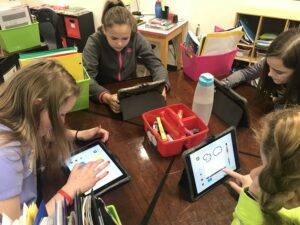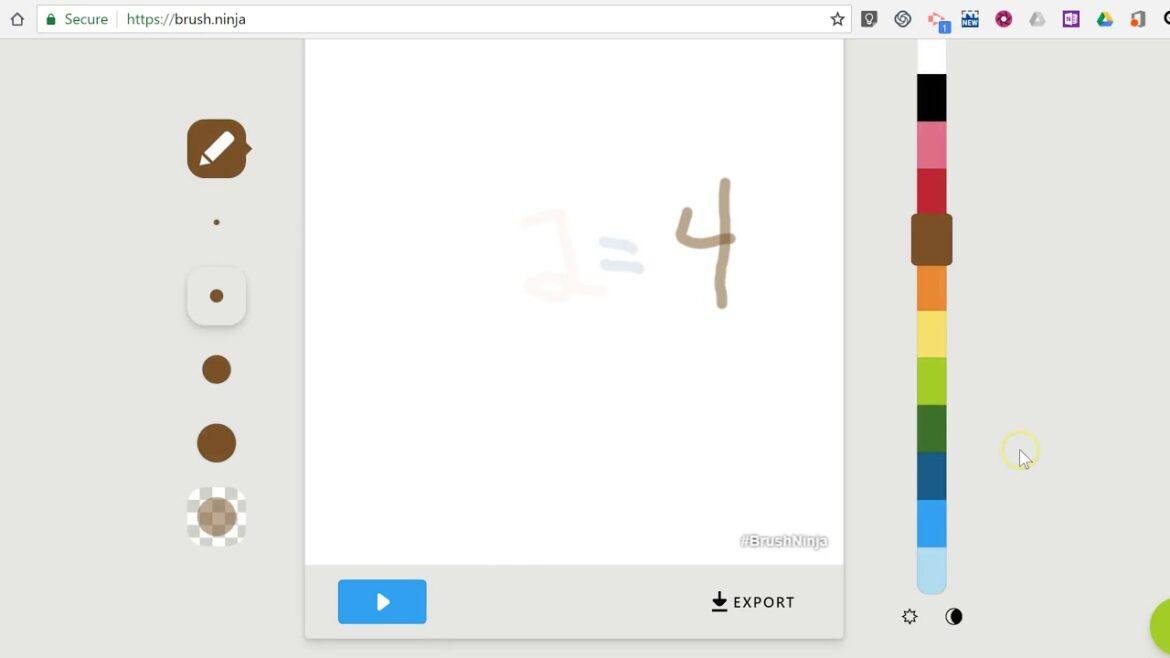You’ve probably heard the latest brain research focused on cementing learning that says that drawing something can help a person better remember it. This works regardless of the age of the student or the content he/she is trying to master. And, good news for folks like me who can’t draw a straight line, the benefits of drawing are not dependent on the students’ level of artistic talent, suggesting that this strategy may work for all students, not just ones who are able to draw well.
So when we draw, we encode the memory in a very rich way, layering together the visual memory of the image, the kinesthetic memory of our hand drawing the image, and the semantic memory that is invoked when we engage in meaning-making. In combination, this greatly increases the likelihood that the concept being drawn will later be recalled. (Source: https://www.edutopia.org/article/science-drawing-and-memory)
A New Tool for Drawing
But if you’re not an elementary teacher with ready access to markers, crayons, map pencils, and other drawing tools, there is a new online resource that you may want to check out for your students: Brush Ninja. Brush Ninja is a completely free, online drawing site that requires no account registration or login and works on any device. It’s incredibly easy to use (the designer of the site tried to make it simple enough for his 2 1/2 year old to create with) and contains no tracking or advertising, something very rare today.
Besides being a drawing tool, the site is also a simple animated GIF creator. That’s perfect, for example, for math students who can draw their thought processes while working a problem and then use animation to show the final result. If your students have access to Padlet or Buncee, they can easily post their creations to those sites and share them with others.
Drawing things encourages people to think of topics in multiple ways, which makes them easier to recall later. Animating things takes this a step further. The addition of movement introduces repetition which reinforces the topic being learned. (Source: Brush Ninja)
Resources for Brush Ninja

There’s a two-minute video that explains how to use the site (that’s really as long as it takes to learn it). Richard Byrne has also created a nice handout on Using Brush Ninja and Screencastify to Make Science Presentations.
If you’re trying to think of lesson ideas to use with Brush Ninja, how about these?
- Have students explain vocabulary words using quickly-created animated GIFs
- Use the site to draw their understanding of the main idea or setting or plot of a story or a play they are reading
- Have them draw historical figures or literary characters for other students to guess their identity
- Draw and play a scene, stopping before the climax and ask students to predict what will happen next
- Explain a scientific or mathematical process by drawing it
- Use Brush Ninja as a screencast-type tool to create short tutorials on software your students (or other educators) are using
- Discover what your students already know about a topic before you begin teaching it by having them draw in a KWL (what they already Know and what they Want to learn) way
- Let students discover their creative side by designing their own animated GIF shorts
The ways you can use this to learn are really endless. And remember that each time your students are drawing with Brush Ninja, they are increasing the likelihood that the information will be retained!

